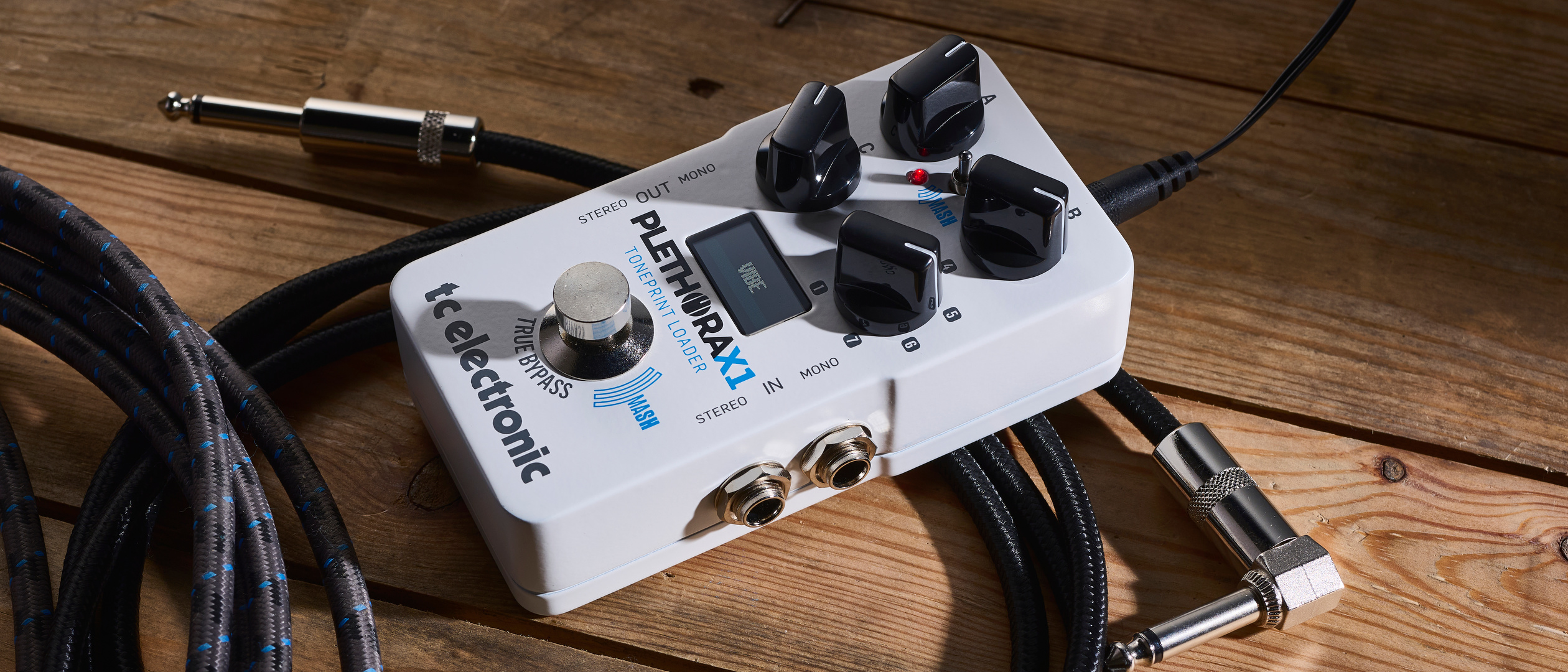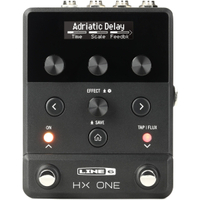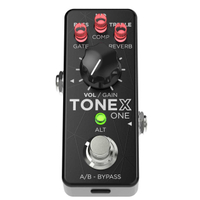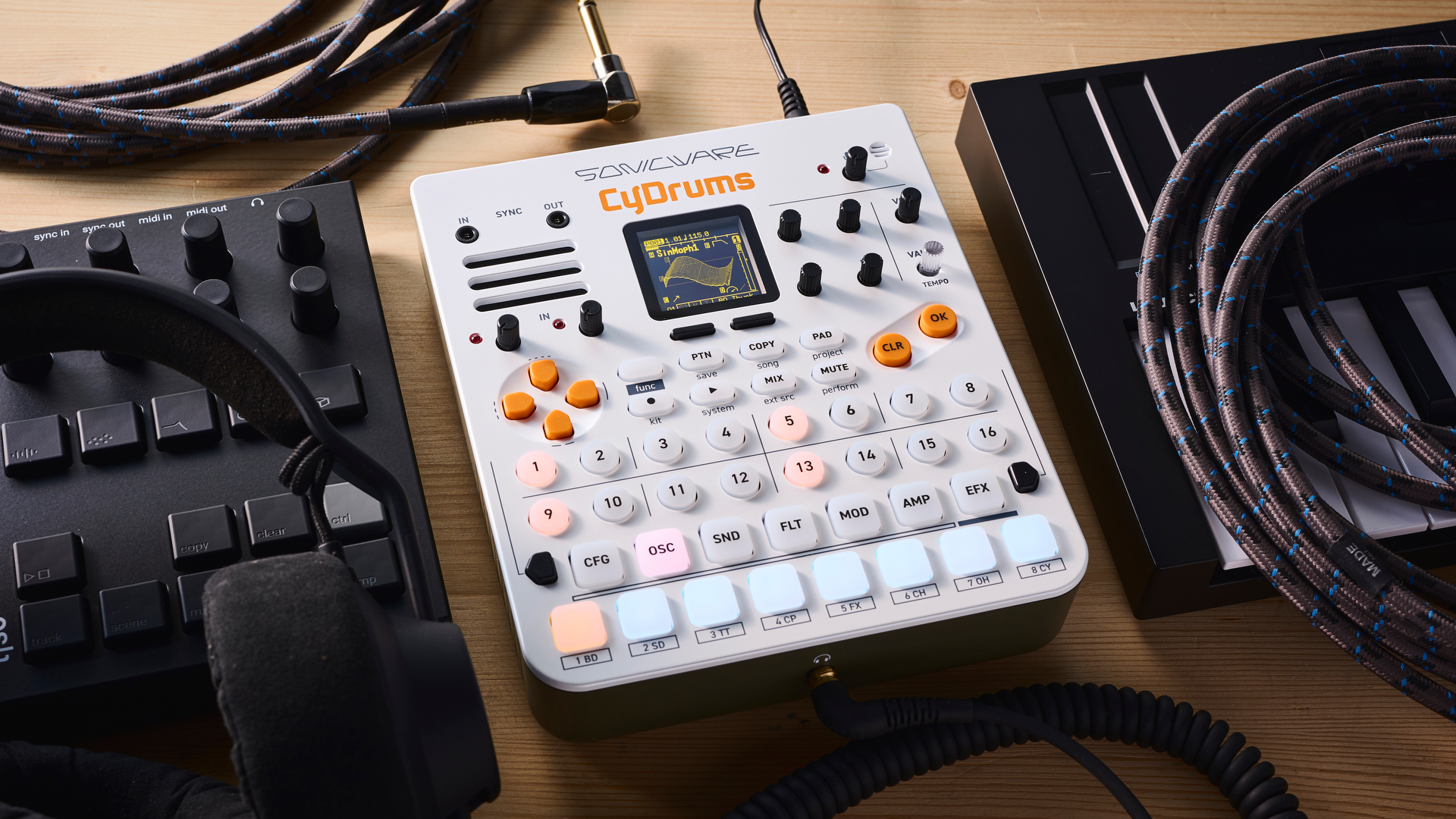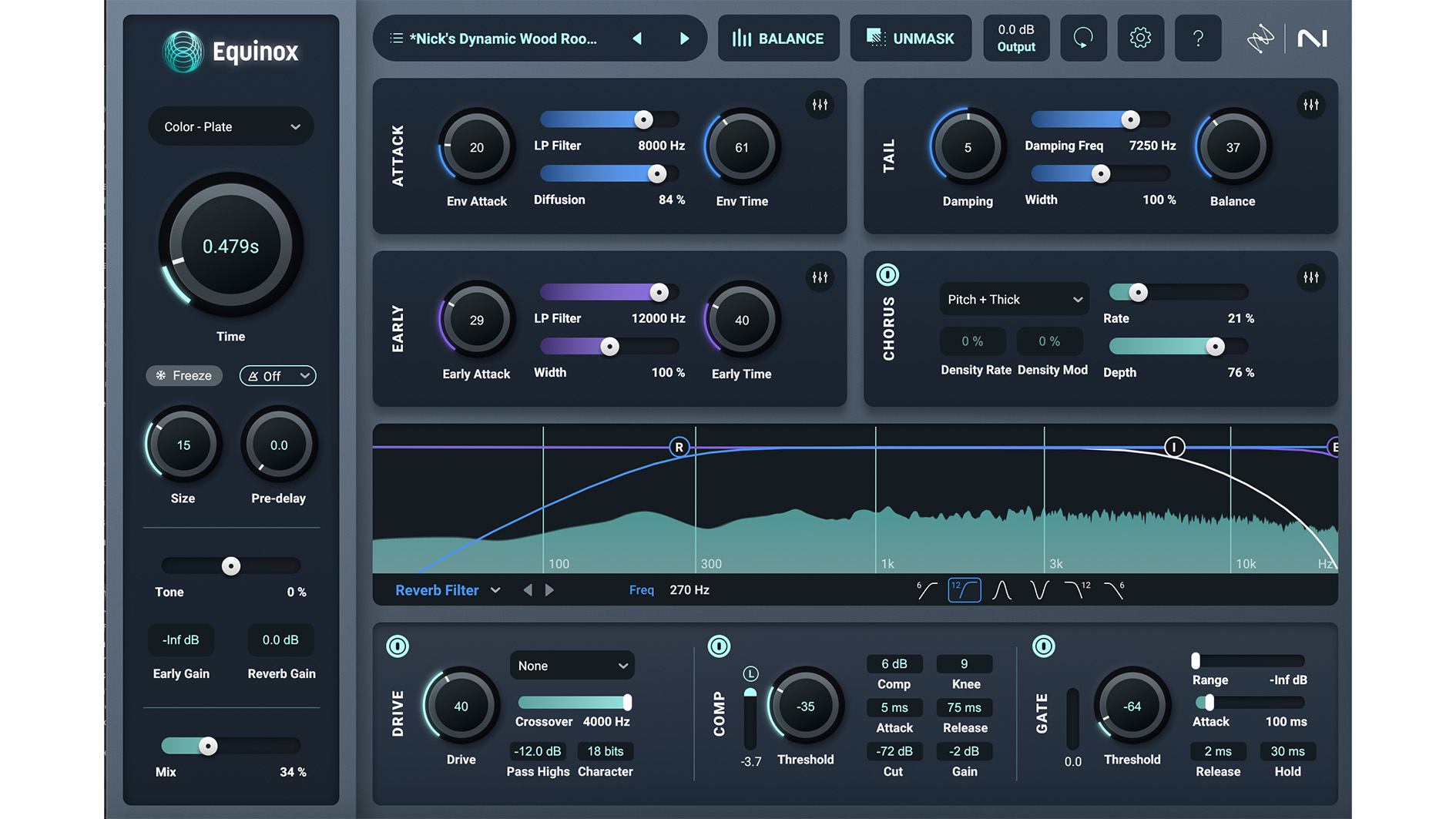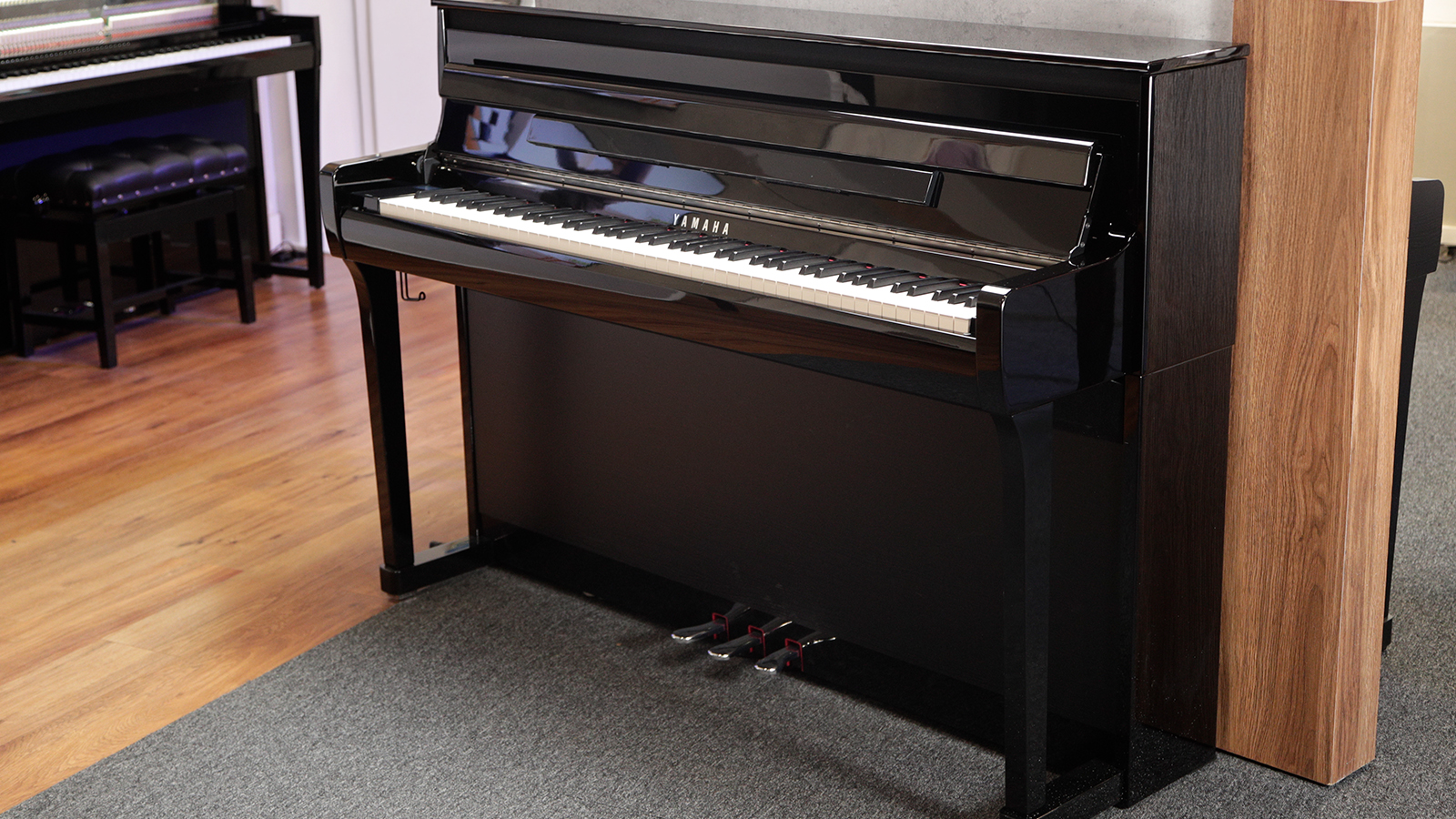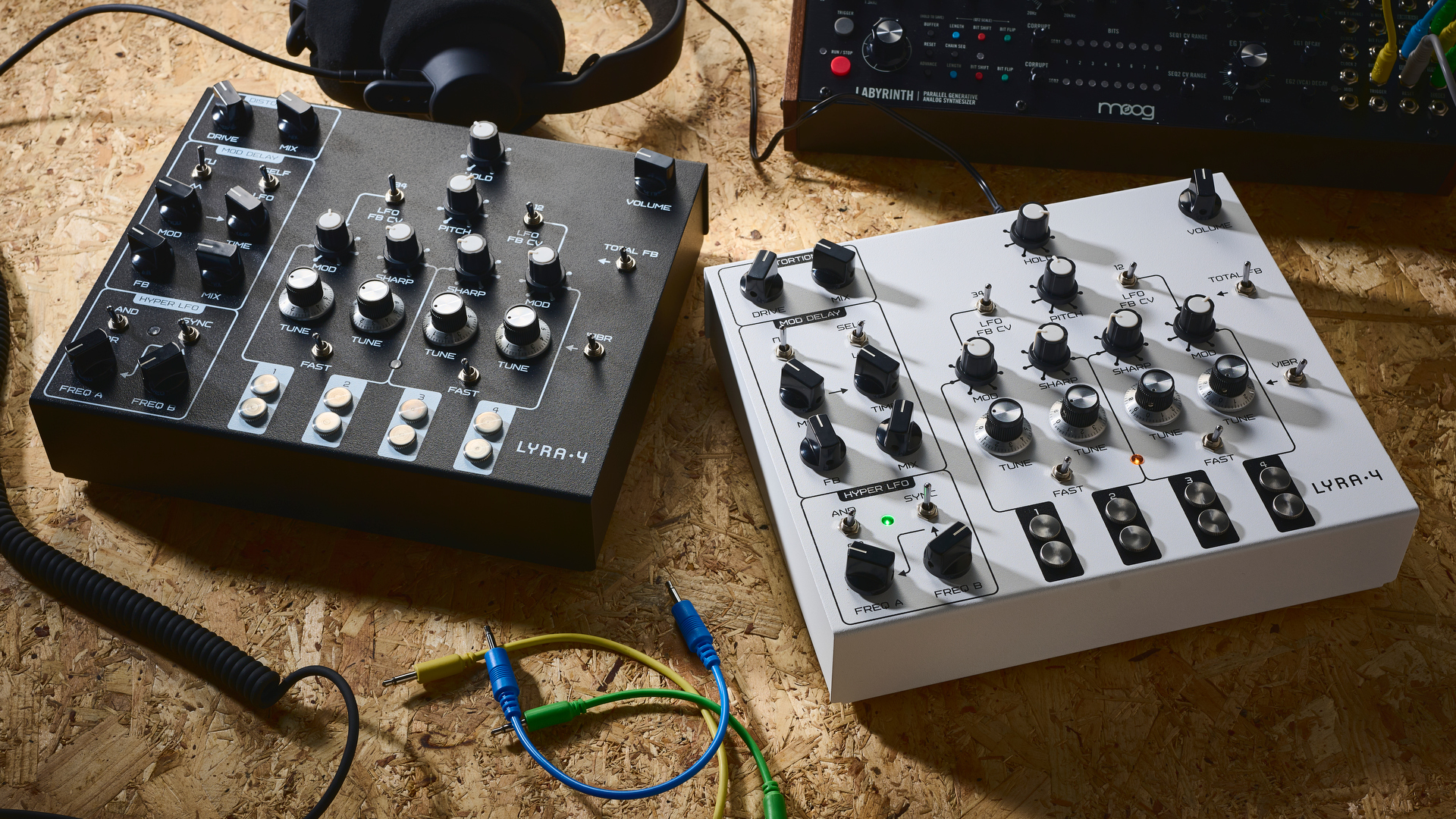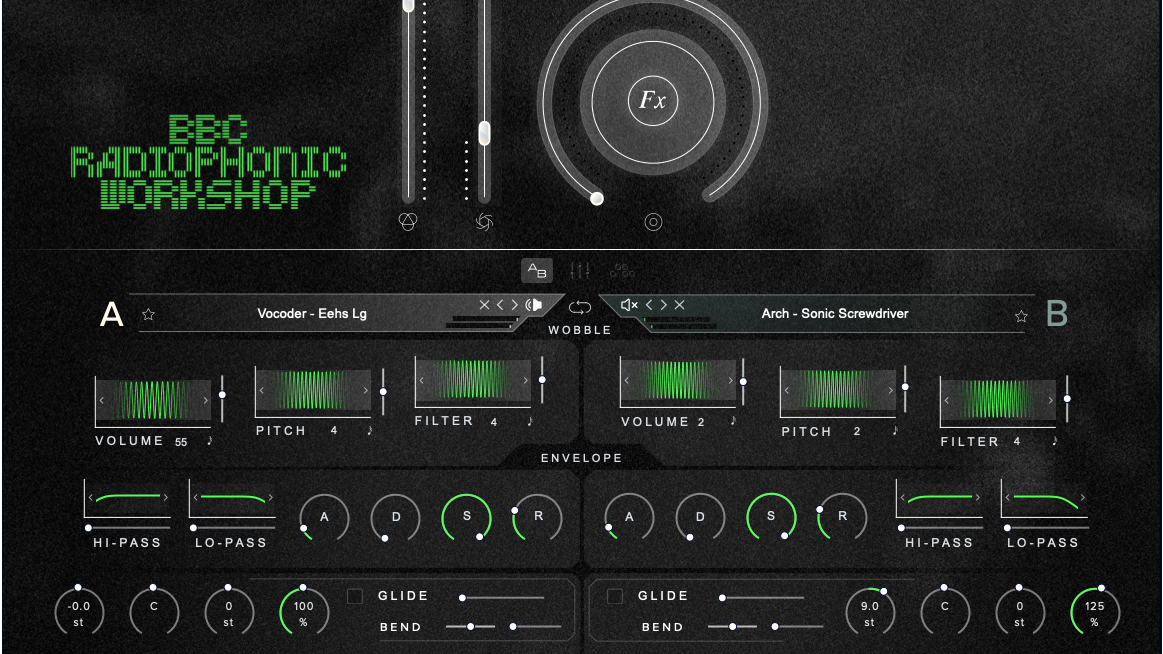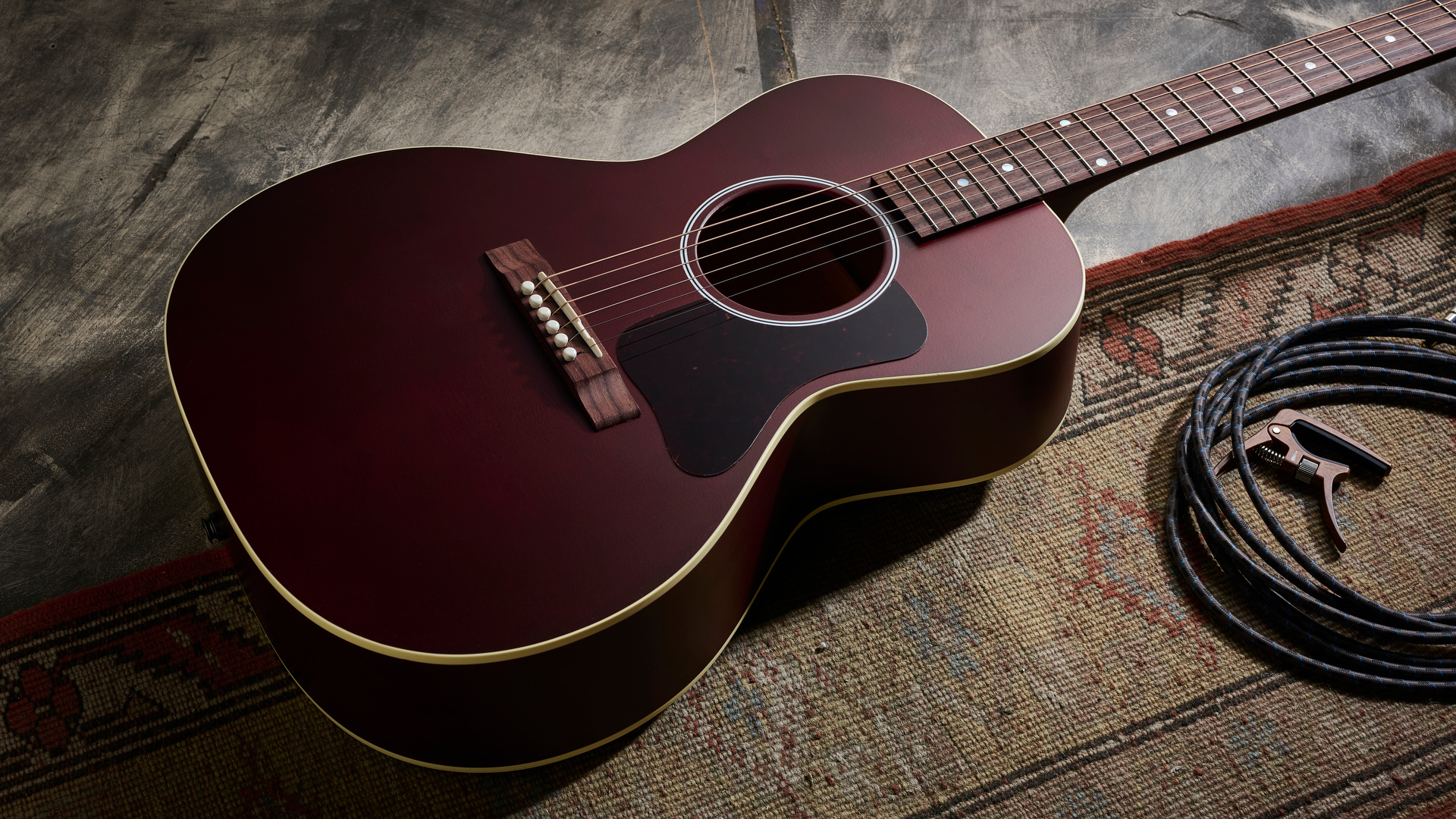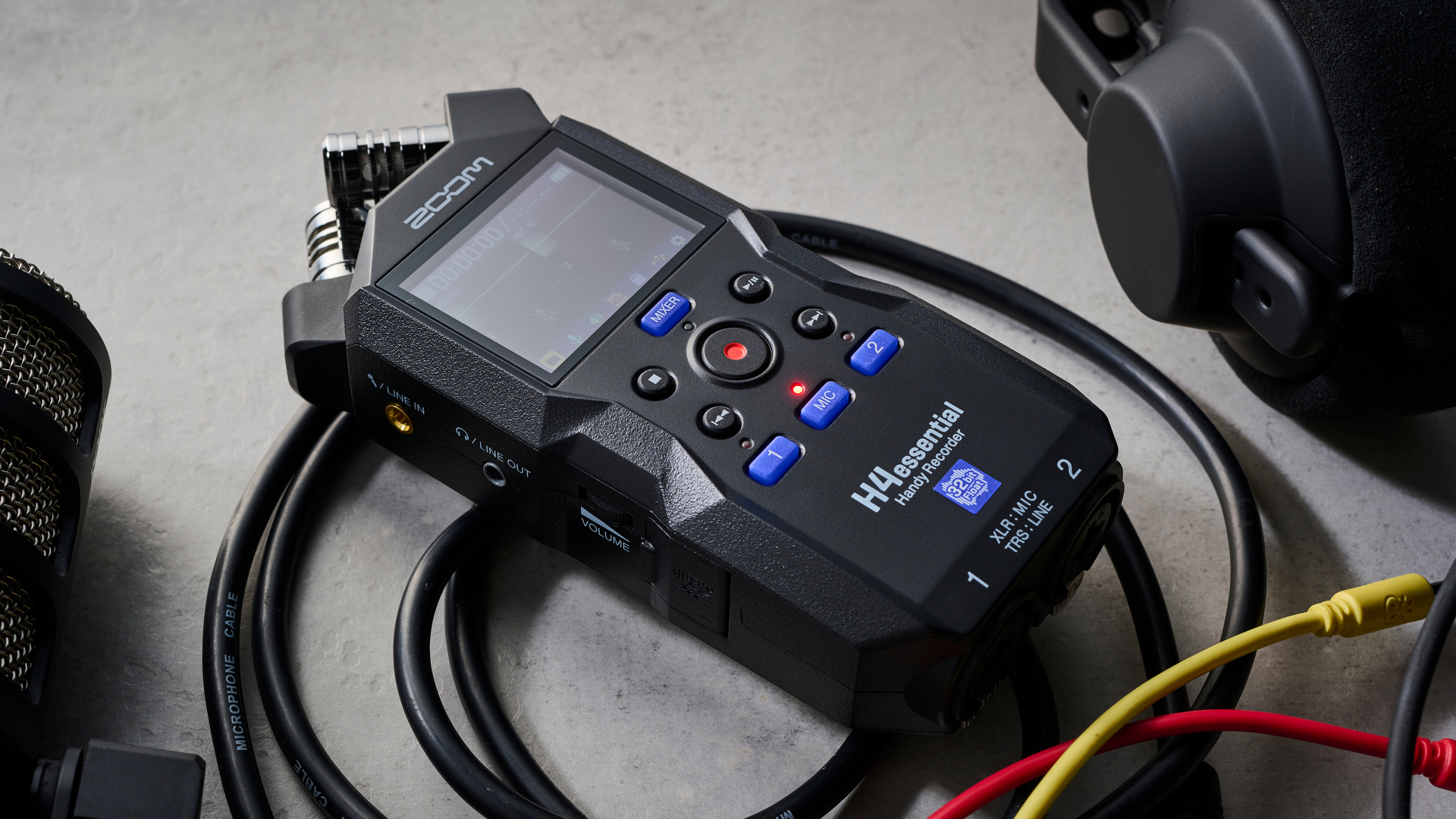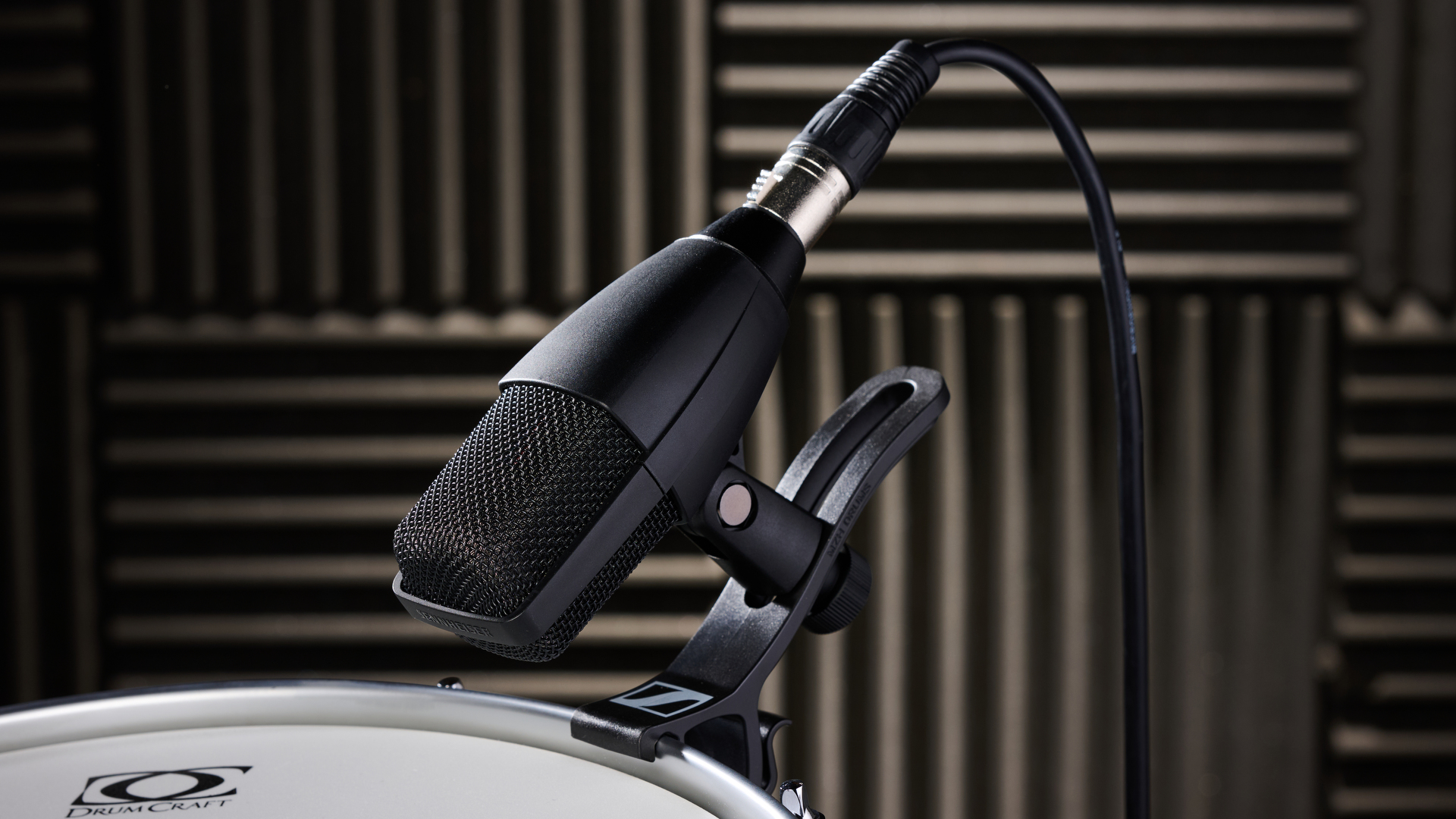MusicRadar Verdict
The TC Electronic Plethora X1 is a worthy addition to the Plethora range – fulfilling a different brief to its larger siblings, as a convenient do-it-all pedal which could be adapted to any board according to individual needs. Once set up to taste, its utility is astounding.
Pros
- +
Small footprint, endless flexibility.
- +
Fantastic sounds across every effect type.
- +
Impressively deep editing capabilities via well-established and proven software.
Cons
- -
Temperamental Bluetooth connection.
- -
Small size can make for less intuitive controls.
MusicRadar's got your back
What is it?
You’ve built a pedalboard, and it’s a masterpiece. The perfect pedal selection, high-quality cabling tucked away neatly, it sounds exactly right and it’s arranged just so. You’re satisfied – until your band floats a new song for the set, with a particular guitar part that just will not sound right without a flanger – and you don’t have one.
Back to the drawing board, then. Wouldn’t it be useful if one of those pedals could temporarily become a flanger, then change back into your usual phaser? Or a delay - or a compressor pedal?
Enter TC Electronic’s Plethora X1 - technically, not a pedal at all, but a ‘TonePrint loader’, a vessel for the extensive library of TonePrint patches that TC and its artist roster have built over the years.
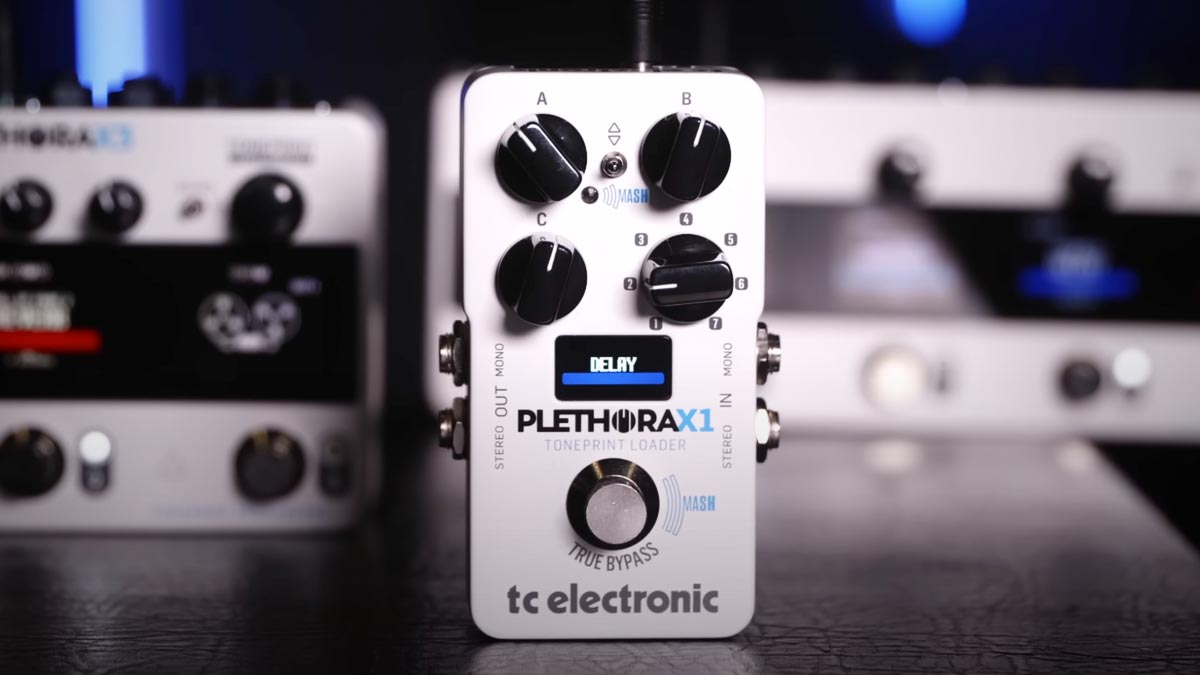
The X1 is a smaller sibling to the established Plethora X3 and X5, in a single-sized enclosure which, via the TonePrint app, becomes any TonePrint-enabled TC pedal you need – the enduring Flashback delay, the HyperGravity compressor, or more niche propositions such as the Shaker vibrato, Mimiq doubler and Quintessence harmoniser.
Fourteen preset slots can be filled with a spread of these effects - or you could keep to fewer effect types, with lots of variations on the theme.
Specs

- PRICE: $179/£159/€179
- TYPE: Single-size digital multi-effects unit
- MADE: China
- CONTROLS: A, B and C parameter knobs, 7-way rotary switch for board selection, non-latching mini toggle switch for adjusting MASH functionality and browsing factory-installed TonePrints, multi-function MASH footswitch, Bluetooth pairing button
- FEATURES: TonePrint app connectivity for loading any combination of effect algorithms, digital screen for monitoring current settings, pressure-sensitive MASH footswitch for expression functions, stereo input and output
- CONNECTIVITY: 2x 1/4" inputs, 2x 1/4" outputs, USB-C input, power input
- BYPASS: Switchable
- POWER: 9V centre negative, 250mA
- DIMENSIONS (WxHxD mm): 72 x 50 x 122
- OPTIONS: The larger Plethora X3 and X5 models are found online for $349/£249 and $459/£329 respectively
- CONTACT: TC Electronic
Build quality
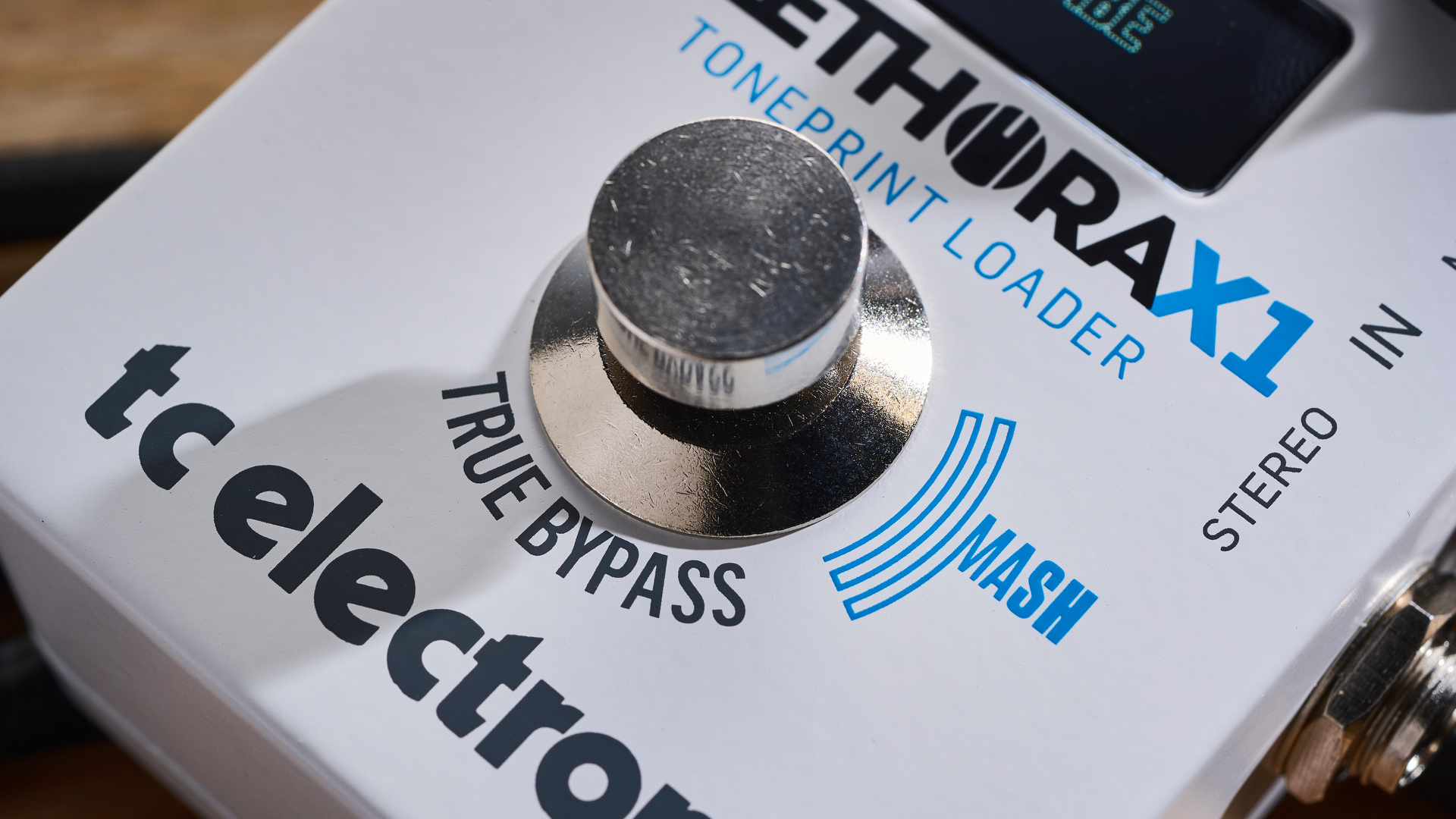
Build quality rating: ★★★★☆
The distinctive enclosure will be familiar to fans of the pedals listed above, with one notable addition – a small screen, displaying the effect you’ve told the Plethora to morph into, and whichever mode the clever MASH footswitch is currently set to.
We first saw TC’s multi-function, pressure-sensitive footswitch in 2017, and it can be a regular latching footswitch or a momentary one – and more, as we’ll see.
One quibble on an otherwise solidly-built unit - on our review sample, the metal mini-switch for MASH settings is a little loose, not sitting in the chassis perfectly.
Usability
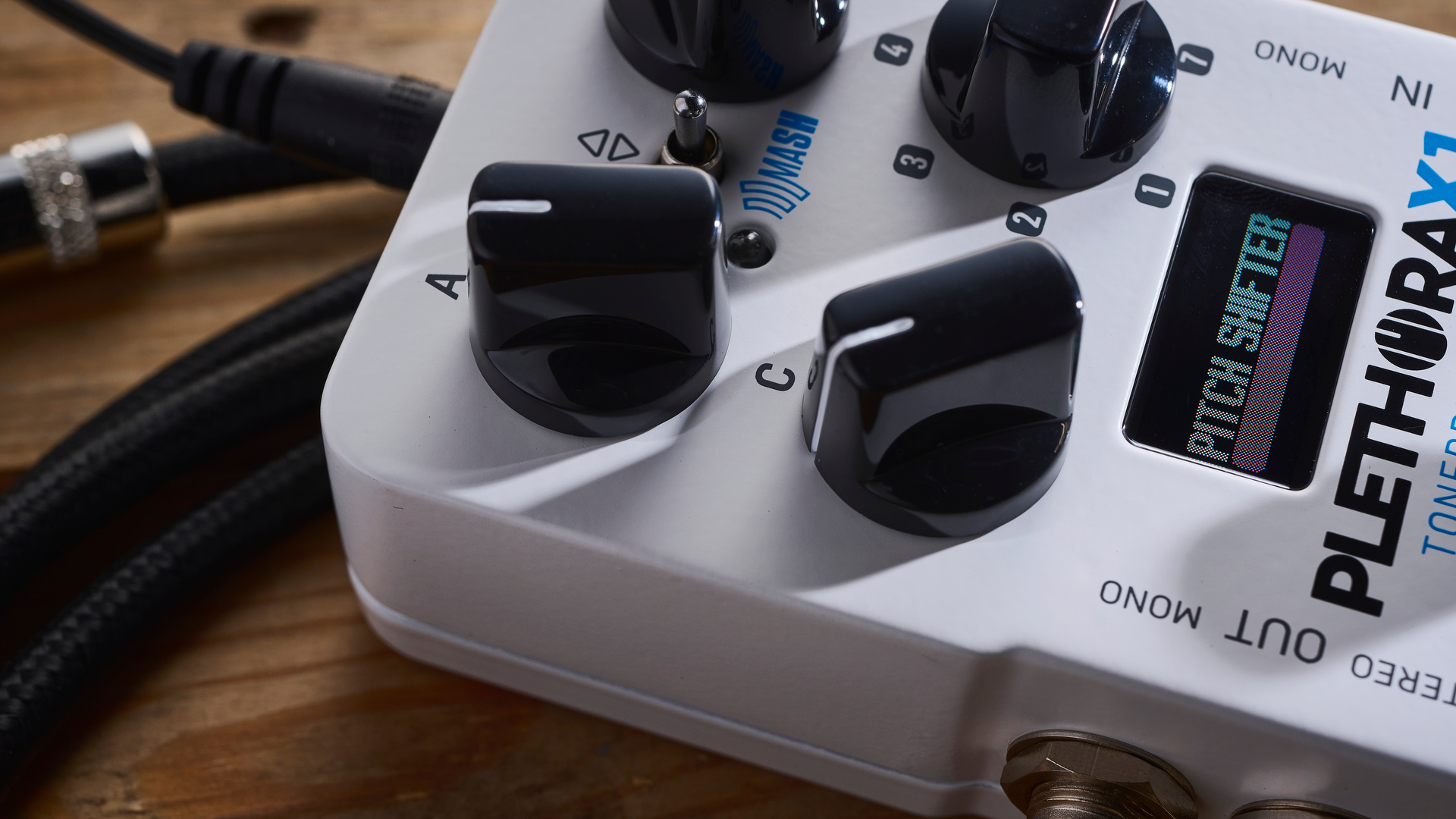
Usability rating: ★★★½
Next up, four knobs – three, labelled A, B and C, for adjusting settings (displayed on the screen as each knob is turned), plus the 7-way rotary encoder for browsing presets (‘boards’) you’ve stored.
When using Bluetooth (as many users will), the connection between TonePrint and the X1 is temperamental. The unit required multiple connection attempts before working consistently
From there, that MASH footswitch also allows A/B switching between two different settings for each board (variations on the same effect, or separate effects altogether) – in total, fourteen slots. For time-based effects, MASH can also become a tap-tempo control, and then there’s its signature – allowing expression pedal-like control over various effect parameters. The X1 is a versatile little device.
From the factory there’s a broad selection of effects to give you a start, but the mind boggles at what else can be loaded in. Less digitally-minded guitarists, take heed – appearance aside, this is a different proposition to the TonePrint pedals many of us know.
One can easily enjoy those pedals without ever connecting to the TonePrint app for more sounds. The Plethora X1, though, needs commitment to its digital nature in order to get the most from it. So, is the jump a straightforward one?
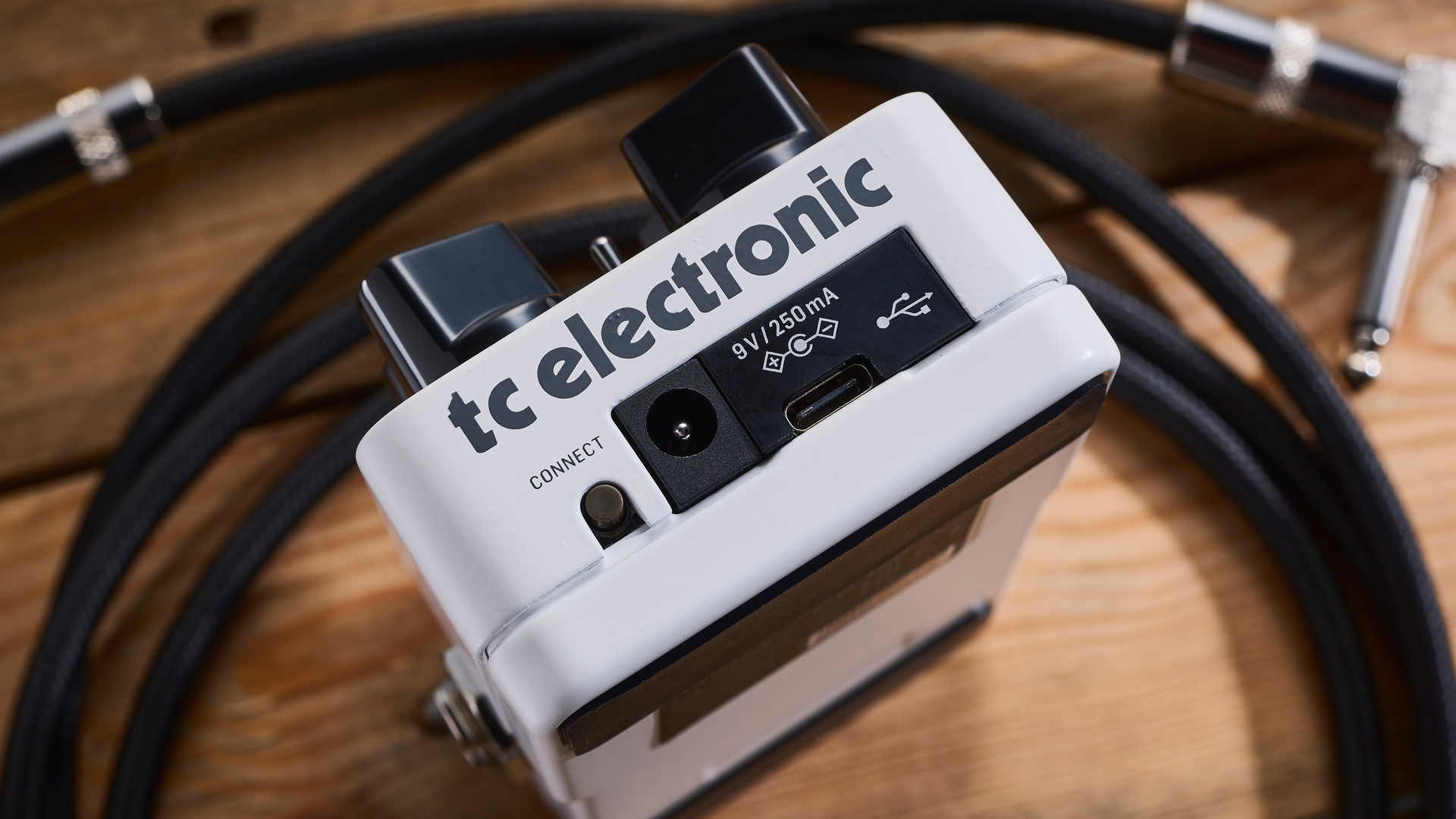
Well, the app is slick and nicely laid out, once the X1 is connected (this can be done via USB cable – not supplied with our unit – or Bluetooth). You browse the library and audition presets in real time, loading the ones you want onto your chosen slot in the X1.
Deep editing can be done in the app, or in broader strokes via the three knobs on the enclosure (these save changes in real time, so everything is always where you left it – useful).
Unfortunately, however, when using Bluetooth (as many users will), the connection between TonePrint and the X1 is temperamental. The unit required multiple connection attempts before working consistently with the app. On some of these attempts, the app quit unexpectedly, or the X1 itself crashed then rebooted.
This instability isn’t such an issue when TonePrint functionality is a smaller feature, but since the X1’s entire ethos revolves around it, user-friendliness is frustratingly compromised here. However, following much initial setup and tweaking, I could focus on the sounds from the presets I’d chosen.
Sounds
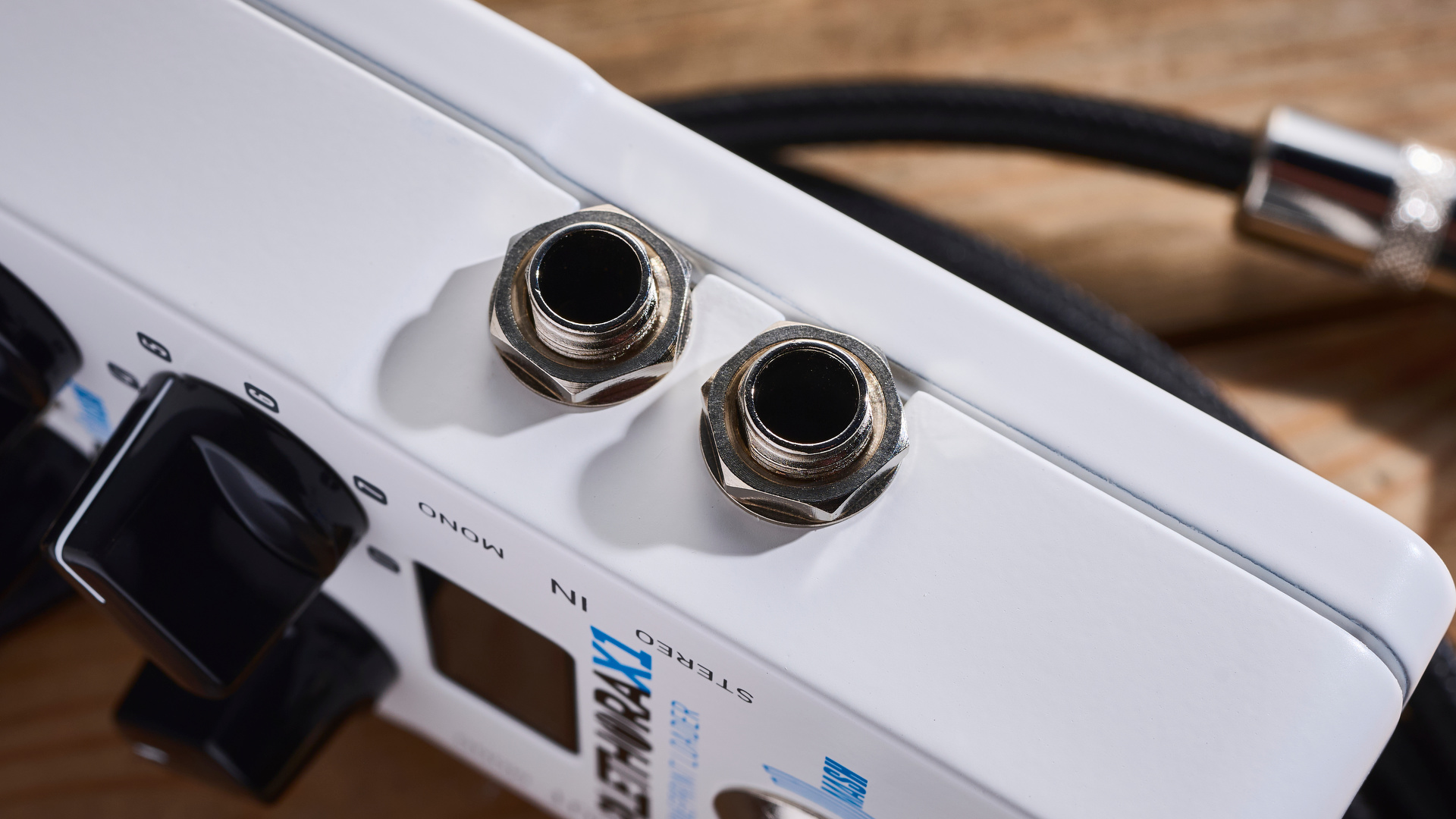
Sounds rating: ★★★★½
Plugged into my Deluxe Reverb, I auditioned compression, pitch-shifting and octave algorithms from the HyperGravity, Quintessence and Sub’n’Up respectively.
Users of those pedals would find no reduction in sound quality here, though the controls are sometimes less intuitive – the app becomes necessary to properly edit more complex settings (and the degree of adjustment is impressive).
There’s a huge variety of sounds available – the numerous artist presets, plus comprehensive libraries from TC’s developers, truly offer something for everyone within each effect type.
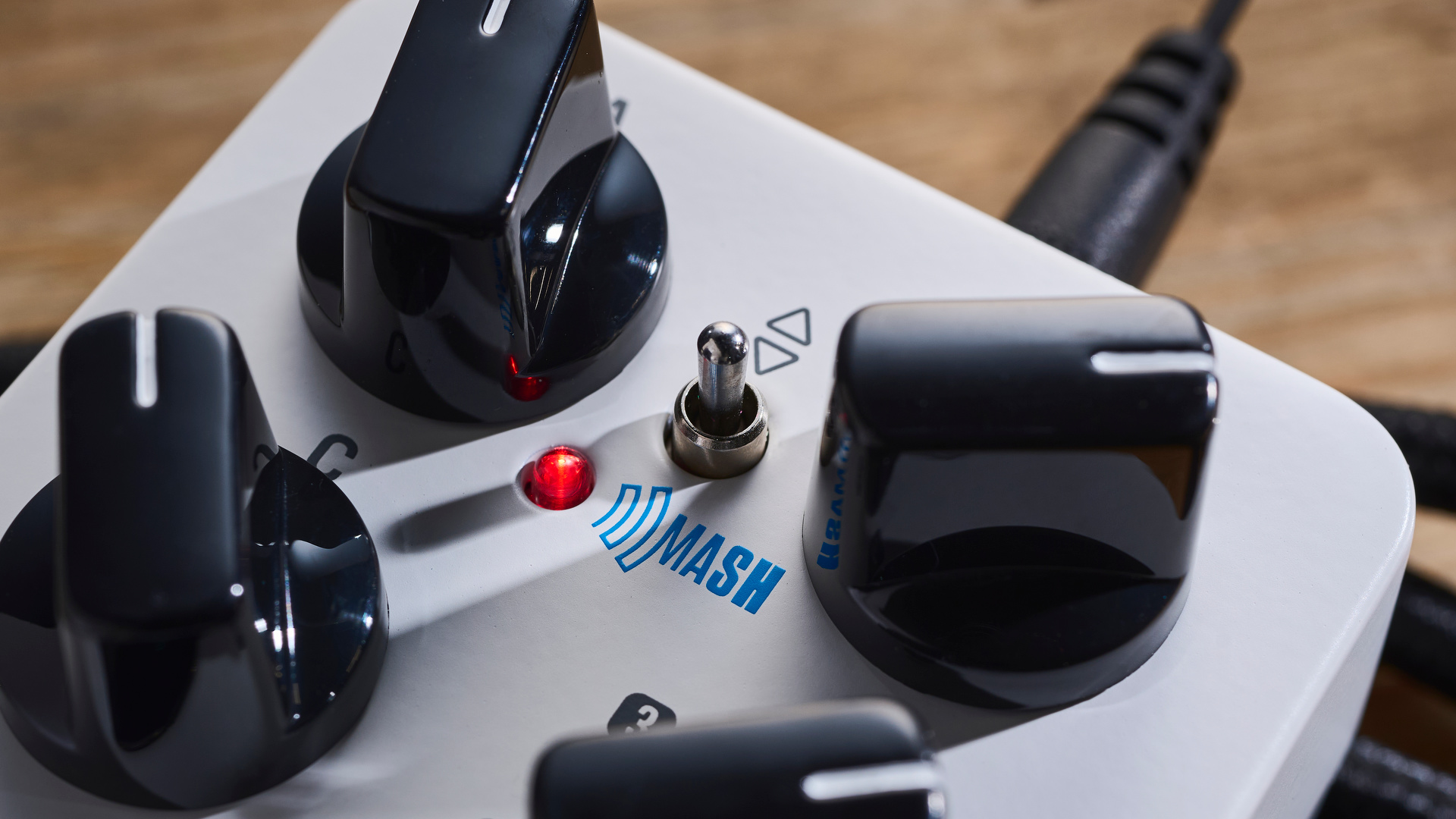
Next, in the effects loop of my Laney VH100R, modulation and time-based effects. As fans of the 2290 or Flashback will attest, delay is one of TC’s strongest suits – that legendary sound quality is undiminished here. I loved the gorgeous Alter Ego sounds developed with tone connoisseur Andy Martin, and the wild self-oscillating echo from the Dillinger Escape Plan’s Ben Weinman.
There’s an abundance of modulation presets for any taste – those from the Viscous Vibe are another highlight, a soupy vintage swirl that can be driven into a hyper-speed frenzy by MASH.
Worth noting – if you need MASH functionality on a given bank, you forfeit the ability to toggle between that bank’s A and B presets – a limitation of the enclosure’s single switch. This can reduce the number of easily accessible presets, but there’s still enough storage for most use cases.
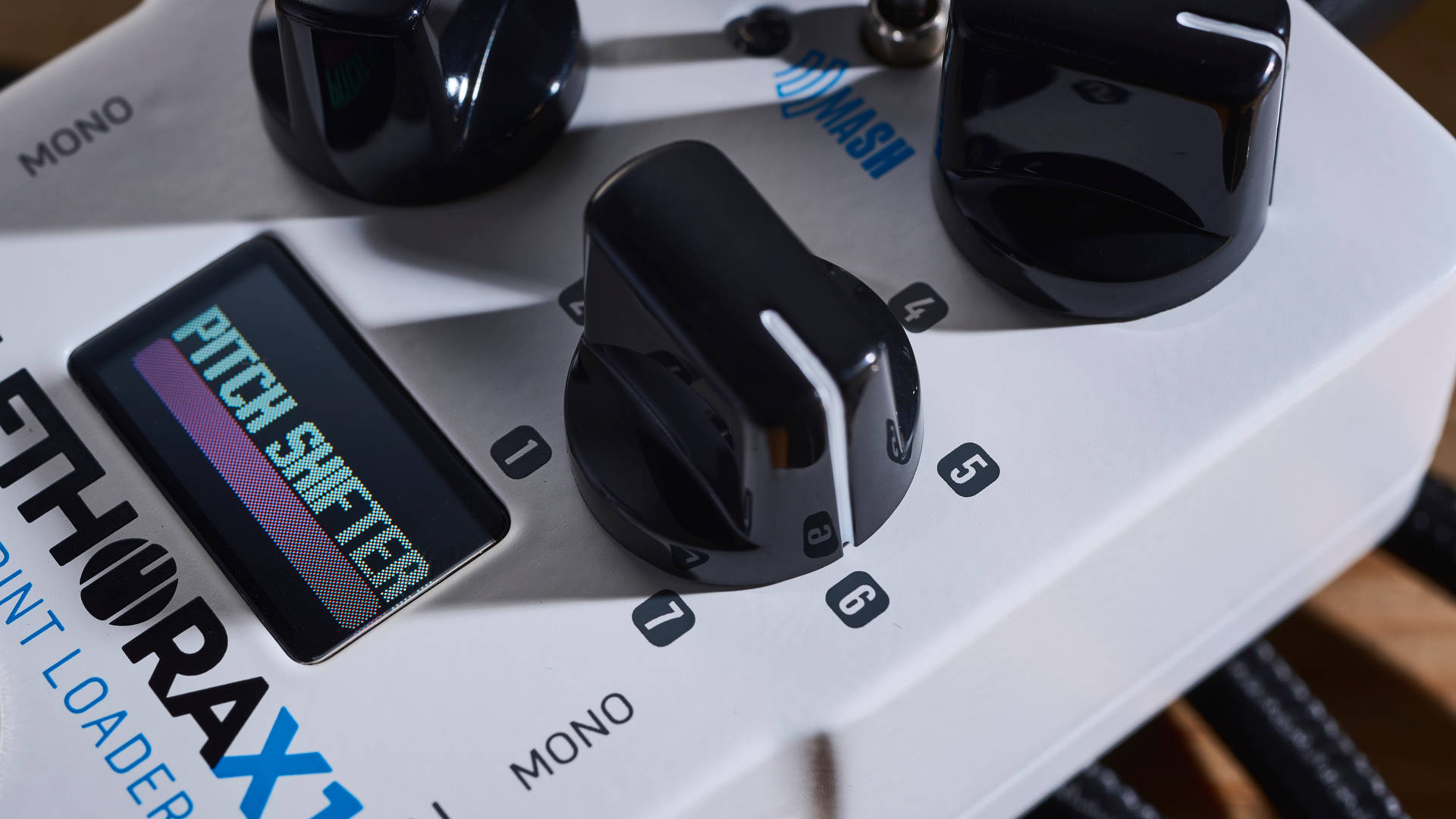
You’ll save money on pedals, but you may end up in a battle with the layout of your pedalboard
Depending on how you utilise the X1, you may move it around your 'board quite regularly. You’ll want it near the start of your signal chain as a compressor but, for delay, perhaps the other end, or the effects loop.
You’ll save money on pedals, but you may end up in a battle with the layout of your pedalboard. However, even used strictly as a reverb, delay and modulation unit, there's such flexibility and potential that you’ll hardly feel short-changed.
Verdict
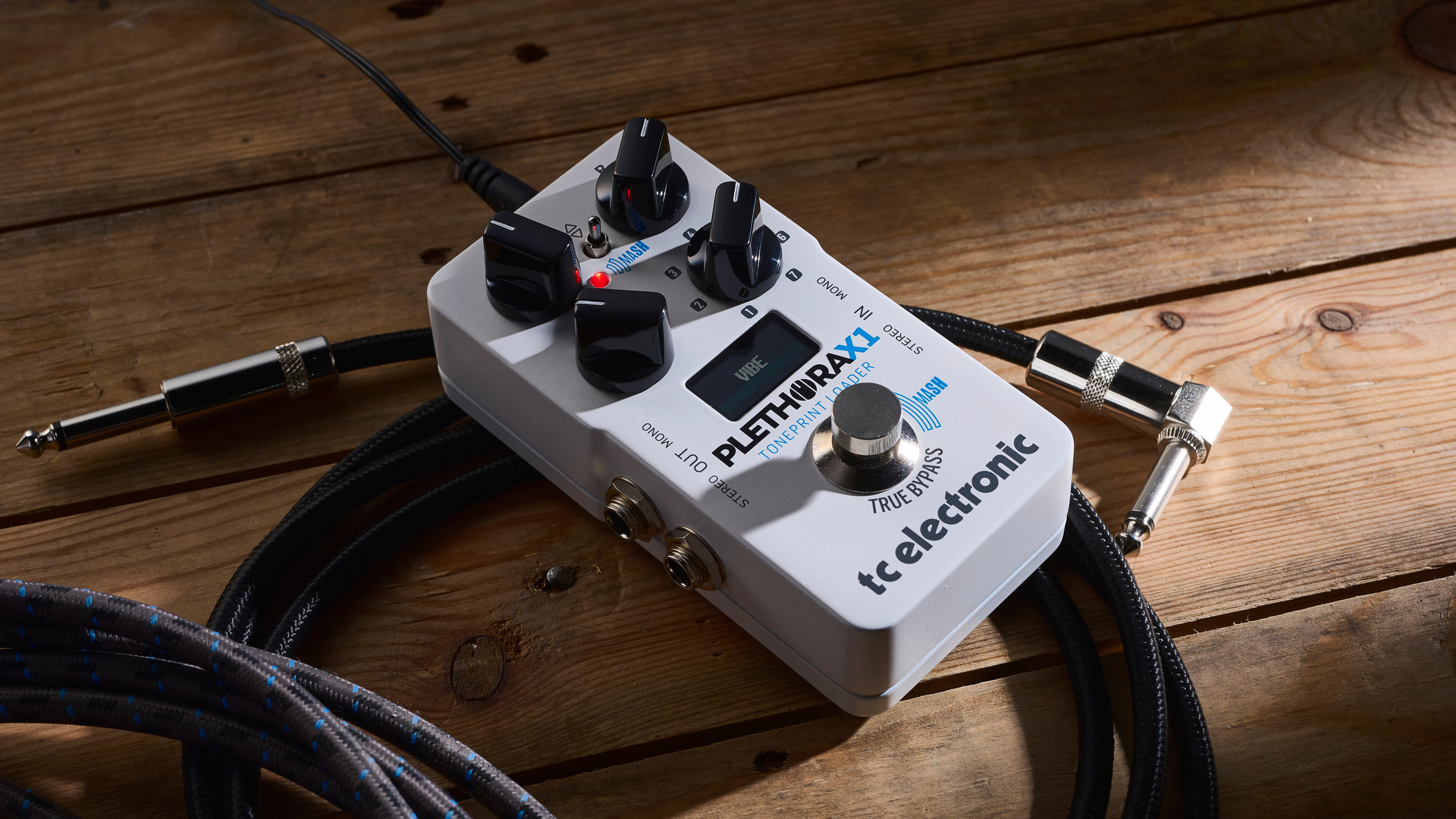
While it’s somewhat hamstrung by connectivity issues, its enormous potential and its tonal quality are obvious
The Plethora X1, then, is a potent expression of what can be achieved with TC’s established preset library, offering endless permutations of worthwhile effects – a real Swiss Army Knife device.
While it’s somewhat hamstrung by connectivity issues, its enormous potential and its tonal quality are obvious once everything is set up and working as intended. For a wide variety of possible use cases, it could be exactly what the doctor ordered.
MusicRadar verdict: The TC Electronic Plethora X1 is a worthy addition to the Plethora range – fulfilling a different brief to its larger siblings, as a convenient do-it-all pedal which could be adapted to any board according to individual needs. Once set up to taste, its utility is astounding.
Test | Results | Score |
|---|---|---|
Build quality | Good but a mini switch on our review unit was a bit loose. | ★★★★☆ |
Usability | Loading in the functionality to suit tour needs relies on a Bluetooth connection – with varying success. | ★★★½ |
Sounds | An excellent, vast array with huge potential. | ★★★★½ |
Overall | The value and quality of tones here is undeniable, once you've set it up. | ★★★★☆ |
Also try
Line 6 HX One
Price $249/£219/€249
Another Swiss Army pedal backed by proven software, with two footswitches for added flexibility – though this does increase its footprint.
Read more: Line 6 HX One review
IK Multimedia Tonex One
Price $179/£149/€169
Heading in the other direction size-wise, this mini pedal packs an unbelievable amount of power into an unbelievably tiny enclosure.
Read more: IK Multimedia Tonex One
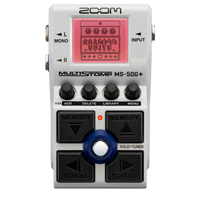
Zoom MultiStomp MS50G+
Price $129/£129/€123
Another seriously flexible solution which, incredibly, allows up to six effects simultaneously.
Hands-on videos
TC Electronic
The Studio Rats
Sweetwater
Connor Flys is a guitarist and bassist for everything from modern country to extreme metal, and the self-styled "supermarket own-brand Steve Lukather" in an acclaimed UK-based Toto tribute band. He is also an utter gear obsessive - with an ever-growing collection of guitars and pedals, and a faintly unsettling knowledge of Ibanez model codes.
You must confirm your public display name before commenting
Please logout and then login again, you will then be prompted to enter your display name.
“Sometimes I am two people. Johnny is the nice one. Cash causes all the trouble. They fight”: How Johnny Cash drew on his own experiences to make his greatest songs
“For those on the hunt for a great quality 12-string electro-acoustic that won’t break the bank, it's a no-brainer”: Martin X Series Remastered D-X2E Brazilian 12-String review
“I have that on more records than anything else”: Take a peek inside Vaughn Oliver’s studio
